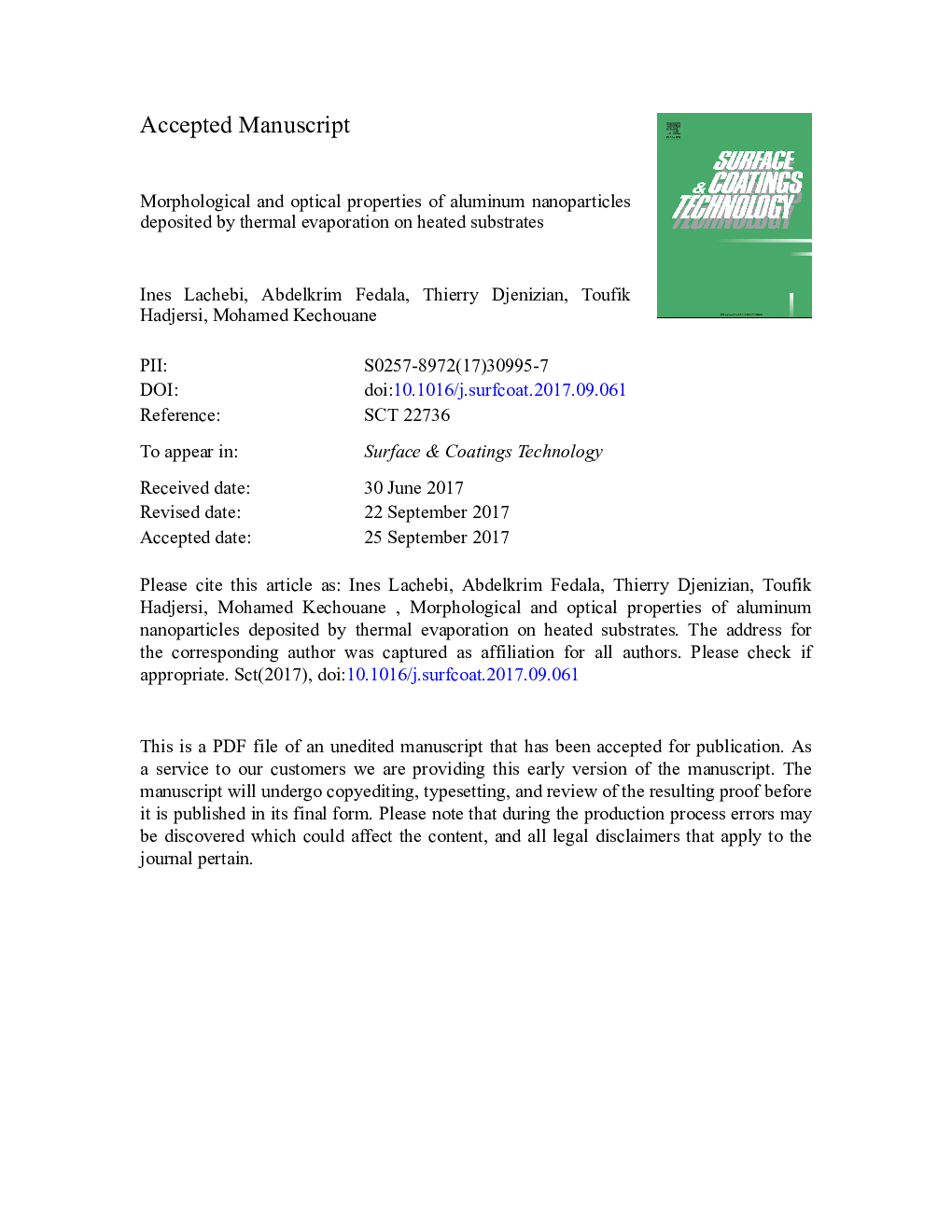| Article ID | Journal | Published Year | Pages | File Type |
|---|---|---|---|---|
| 8023920 | Surface and Coatings Technology | 2018 | 23 Pages |
Abstract
In the present work, aluminum nanoparticles (Al-NPs) are deposited by thermal evaporation on heated substrates without additional annealing process after deposition on silicon (100) and corning glass. Their morphological and optical properties are investigated by Scanning Electron Microscopy (SEM), Atomic Force Microscope (AFM), and Optical Transmission Technique. The substrate temperature was varied from 200 to 580 °C and the mass thickness between 4 and 23 nm. Al-NPs are well formed in all deposition temperatures with a mass thickness of 15 nm in one-step. The mean diameter of Al-NPs rises from 50 to 91 nm as the deposition temperature increases from 200 to 500 °C, and then it remains nearly unchanged in the range of 500-580 °C. When the mass thickness increases from 4 to 23 nm at 400 °C deposition temperature, the NPs size increases from 15 to 135 nm. The NPs turn into irregular in shape and their coverage density increases strongly. Under some conditions, the Al-NPs exhibit a broad absorption in the near ultraviolet range. This is attributed to the Localized Surface Plasmon Resonances (LSPRs) absorption. The deposition temperature and the aluminum mass thickness are the key parameters for controlling the Al-NPs size. Based on the obtained results, a formation mechanism of NPs is proposed when ultra-thin film aluminum is deposited on heated substrates.
Related Topics
Physical Sciences and Engineering
Materials Science
Nanotechnology
Authors
Ines Lachebi, Abdelkrim Fedala, Thierry Djenizian, Toufik Hadjersi, Mohamed Kechouane,
